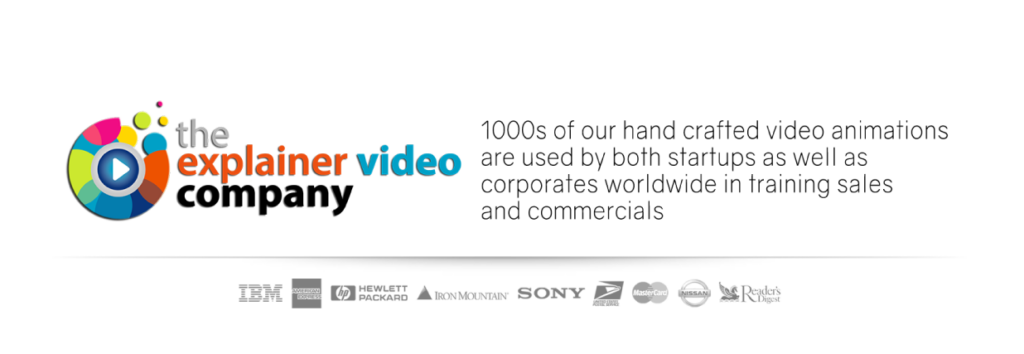Explainer Videos For Virtual Reality (VR)
Explainer Videos For Virtual Reality
 Welcome to the world of Virtual Reality (VR) explainer videos! In this article, we'll dive into how these innovative videos use VR technology to make learning and understanding complex topics not only easier but also more engaging.
Whether you're curious about how these videos are made, the types available, their benefits, or how they're reshaping learning and training, we've got it all covered.
So, grab your VR headset and prepare to explore everything you need to know about VR explainer videos, a tool that's transforming how we connect with information and each other.
Welcome to the world of Virtual Reality (VR) explainer videos! In this article, we'll dive into how these innovative videos use VR technology to make learning and understanding complex topics not only easier but also more engaging.
Whether you're curious about how these videos are made, the types available, their benefits, or how they're reshaping learning and training, we've got it all covered.
So, grab your VR headset and prepare to explore everything you need to know about VR explainer videos, a tool that's transforming how we connect with information and each other.
| Subject Title | Subject Description |
|---|---|
| Introduction to VR Explainer Videos | An expanded overview of what VR explainer videos are, their components, and why they are transformative in various industries. |
| Types of VR Explainer Videos | Detailed exploration of the different types of VR explainer videos, including real-world examples and case studies. |
| Creating Effective VR Explainer Videos | Comprehensive guide on conceptualization, production, and testing for creating impactful VR explainer videos. |
| Benefits of Using VR Explainer Videos | An in-depth analysis of the advantages VR explainer videos offer, supported by statistics and expert opinions. |
| Challenges and Solutions | Further discussion on overcoming technical and accessibility challenges in VR video production, with innovative solutions. |
| Future Trends | Extended insights into emerging technologies and how they will shape the evolution of VR explainer videos. |
| FAQs | Expanded answers to common questions about VR explainer videos, providing deeper understanding and clarity. |
Introduction to VR Explainer Videos
What Are VR Explainer Videos?
Virtual Reality (VR) explainer videos are a state-of-the-art educational tool that leverages the immersive capabilities of VR technology to present complex information in a dynamic and engaging way. Explainer Videos For Virtual Reality encapsulate viewers in a virtual space, often allowing for interactive elements that make learning active rather than passive. Key components include high-definition visuals, spatial audio, and interactive scenarios that mimic real-life experiences.Why Are They Important?
These videos are transformative across various sectors, including healthcare, where they can simulate surgical procedures for training purposes; education, where complex scientific concepts can be visualized; and real estate, where potential buyers can tour properties remotely. The immersive nature of VR makes it an excellent tool for training, education, and marketing, providing users with experiences that are not only memorable but also deeply engaging.Types of Explainer Videos For Virtual Reality

360-degree Videos
360-degree explainer videos are a form of VR that captures every angle of the environment, allowing the user to look around them at any time. This type is particularly effective for virtual tours of real estate, museums, and historical sites, providing a panoramic view that enriches the viewer's experience.Interactive VR Videos
Interactive VR videos incorporate elements that users can interact with, such as buttons, levers, or other virtual objects. These videos are highly beneficial in educational settings, for example, allowing students to conduct virtual lab experiments where they can manipulate equipment and observe results without any risk.Animated VR Videos
Animated VR videos use computer-generated imagery (CGI) to create environments that might be impossible to film in real life. This type is invaluable for visualizing abstract or futuristic concepts, such as exploring the inside of a human cell or touring a city as it might look 100 years in the future.Creating Effective VR Explainer Videos

Conceptualization
The first step is to clearly define the purpose of the video and understand the target audience's needs. This involves selecting the right type of VR video and determining the key messages that need to be conveyed.Production
Production involves several key stages, from scripting to filming and programming. Scripting should be concise yet descriptive enough to guide users through the VR experience. Filming, especially for 360-degree and interactive videos, requires specialized equipment and software.Testing
Before final release, VR explainer videos should be thoroughly tested to ensure they are engaging, informative, and free from technical glitches. This might involve user feedback sessions and iterative improvements based on testing outcomes.
Benefits of Using VR Explainer Videos
Enhanced Learning Experience
VR explainer videos create an immersive learning environment that is highly effective for education and training. By simulating real-life scenarios, these videos help learners understand complex concepts and procedures in a more interactive and engaging way. The sensory experience of VR—combining visual, auditory, and sometimes even haptic feedback—greatly enhances retention and comprehension rates. Research shows that immersive learning environments can increase retention rates by up to 75%, as they simulate real experiences that embed knowledge deeper than traditional learning methods.Increased Engagement
The interactive nature of VR keeps users engaged, making it a powerful tool for education and corporate training. Users can explore, manipulate, and control their learning experience, which increases motivation and interest in the subject matter. This active participation is a significant departure from passive learning techniques, fostering a deeper connection with the content and improving the overall learning outcomes.Accessibility and Scalability
VR explainer videos can be accessed from anywhere in the world, requiring only VR equipment and a stable internet connection. This makes it easier to train multiple employees across different locations simultaneously, ensuring consistent training experiences for everyone, regardless of their geographic location. For educational institutions, this means being able to provide high-quality education to students in remote or underserved areas.Customizable Learning Paths
VR technology allows for the creation of personalized learning experiences, where content can be adjusted to suit different learning speeds and styles. Advanced VR platforms can even analyze a user’s performance in real-time and modify the difficulty level or suggest additional content according to individual needs. This adaptability makes VR explainer videos an excellent choice for a wide range of users, from students needing extra help to professionals looking for advanced training.Safe and Controlled Environment
VR explainer videos provide a safe space for learners to practice and learn from their mistakes without real-world consequences. This is particularly beneficial in fields like medicine, aviation, and heavy machinery operation, where mistakes can be costly or dangerous. Learners can repeat processes and procedures as many times as needed to gain confidence and mastery.Cost-Effectiveness Over Time
While the initial investment in VR technology can be high, over time, VR explainer videos prove to be cost-effective. They reduce the need for physical materials, eliminate travel expenses for training, and decrease the time required for learning through streamlined and focused experiences. Additionally, once a VR explainer video is created, it can be reused countless times, providing a high return on investment.Future-Proofing Education and Training
As technology evolves, so too do the expectations of learners and employees. Integrating VR into training and educational programs demonstrates a commitment to innovation and continuous improvement. It prepares organizations for future technological advancements and helps build a culture that embraces change. By leveraging the unique capabilities of VR, explainer videos become more than just a learning tool; they transform into an engaging, effective, and scalable solution with far-reaching benefits for various industries.Explainer Videos For Virtual Reality: Challenges and Solutions

Technical and Financial Challenges
Producing VR content can be expensive and technically complex. However, the rise of affordable VR software and hardware is making it increasingly accessible. Solutions for cost reduction include using open-source VR development tools and simplifying video elements.Accessibility Issues
To tackle the issue of limited access to VR hardware, developers are creating more mobile-friendly VR experiences, which can be accessed with smartphones and simple VR headsets like Google Cardboard.Explainer Videos For Virtual Reality: Future Trends
 Emerging technologies like augmented reality (AR) and artificial intelligence (AI) are set to further enhance VR animated explainer videos. AI, for instance, can be used to create more personalized learning experiences by adapting the video's content in real-time based on user interactions.
Emerging technologies like augmented reality (AR) and artificial intelligence (AI) are set to further enhance VR animated explainer videos. AI, for instance, can be used to create more personalized learning experiences by adapting the video's content in real-time based on user interactions.
Explainer Videos For Virtual Reality (VR): FAQs
What is the average cost of producing a VR explainer video?
Costs can range from $5,000 for simple projects to over $100,000 for high-end productions involving complex interactions or high-quality animations.Can VR explainer videos replace traditional training methods?
While VR offers unique advantages, it is generally best used as a supplementary tool that enhances rather than replaces traditional methods.
Explainer Videos For Virtual Reality an Article by Nicole Delgado 2024 | CMO | Explainer Video Company | Animated Explainer Videos


Comments
Post a Comment